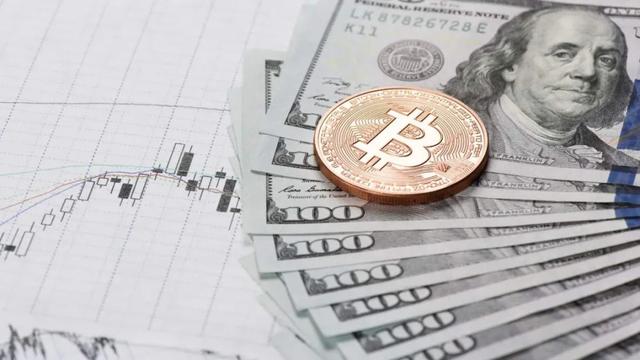Yangchun has arrived in April, and cryptocurrencies continue to rise against the trend?
The global economic data released last week is worrying. The data in the middle of the week showed that the decline in exports from major Asian economies such as Japan and South Korea also hit global stock markets, causing the S & P 500 index and the FTSE 100 index to fall sharply.
However, from the perspective of crypto assets, Bitcoin and other mainstream cryptocurrencies have performed well during this difficult period. Bitcoin has been in the integration stage, maintaining a sharp fluctuation between $ 6,000 and $ 7,000. Both rapid upwards and downwards have strange rises, but overall, satisfied with the current firm price. With the Fed's unlimited easing policy, which has influenced the decision to purchase assets, Bitcoin has a chance to move towards $ 7,500 in the short term.
Bitcoin's second quarter outlook
So what will happen to cryptocurrencies in this new quarter? Of course, the biggest event is the halving of Bitcoin, and the reduction in block rewards is now only more than a month away. The price of the first two halvings has risen sharply. I don't know how this will change.

- Staking this year: have you made money?
- The report shows that the Ethereum DeFi project has grown by nearly 800% over last year
- New “anti-epidemic” tactics: WHO, IBM, Oracle, and Microsoft build an open data blockchain project
After halving, I think that Bitcoin will reach a peak of $ 20,000 from the end of 2020 to the beginning of 2021. This will accelerate the bull market, and Bitcoin will reach US $ 100,000 by the end of 2021 to the beginning of 2022.
There are many factors that indicate price increases. First, the halving of block rewards in May means that miners with lower equipment efficiency will be eliminated, resulting in a decrease in the hash rate and the Bitcoin ecosystem becoming more efficient.
At the same time, the initial decline in supply will bring upward momentum to prices, which will be combined with inflation. This is due to the global quantitative easing measures caused by the countermeasures between central banks and COVID-19. not bad.
It should also be noted that in the volatile quarter of the first quarter of 2020, Bitcoin did not actually fall like the global market. Crypto assets fell by only 12%, outperforming the S & P 500 and FTSE 100, both of which fell by 23% and 25%.
Other mainstream cryptocurrencies
Ethereum is seeking to implement sharding to solve its scalability challenge, which will divide the network into smaller fragments, so that transactions can be processed faster and more efficiently.
I do n’t think this will have much impact on the price, because the overall supply and demand relationship that usually causes price changes has not changed, but it is encouraging that the Ethereum team wants to carry out large-scale POS upgrades. This is a smaller step in the long-term goal of tokens changing from proof of work to proof of stake.

In the second quarter, Ripple hopes to continue to provide on-demand liquidity to banks and payment providers. I truly believe that if they do it right, XRP may be the first crypto asset that is truly adopted globally. The ongoing litigation between Ripple and the SEC continues to haunt the company.
Nonetheless, Ripple's software developers made a proposal that allows users to send private transactions to each other using the XRP ledger. If they achieve this, then its importance is exaggerated because it solves one of the main problems of encryption technology used by private organizations, that is, transparency.
If the transactions on the XRP ledger can be private, it can greatly facilitate the use of cryptocurrencies by institutional investors.
Finally, I emphasize another important theme of this year-CBDC, otherwise the weekly newsletter will be incomplete. The Central Bank of France issued an appeal for companies to assist them in researching digital currencies.
Of course it is in the early stages, but the Bank of France hopes to discover how to use blockchain technology for interbank settlement, what are the benefits to CBDC, and their potential impact on stability, monetary policy, and regulation. This trend will only accelerate in the rest of 2020.
Compiled by the BluemountainLabs team, abridged, English copyright belongs to the original author, please contact the compiler for reprint in Chinese. In addition, all contents in this report are for reference only and do not constitute any investment advice.
Original source: https://www.newsbtc.com/2020/04/08/cryptoassets-continue-to-buck-the-trend/
We will continue to update Blocking; if you have any questions or suggestions, please contact us!
Was this article helpful?
93 out of 132 found this helpful
Related articles
- Blockchain payment company Sila completes $ 7.7 million seed round of financing to welcome the next generation of global financial system innovation
- Cryptocommercial bank Galaxy Digital's latest earnings report: Q4 2019 loss of 32.9 million US dollars, stock price fell 65%
- To improve the efficiency of cargo release, shipping giants and Tesla jointly piloted blockchain applications
- Market analysis: BCH halved, the market bulls are still expected to test
- Do crypto scams target charity donations for the new crown epidemic? Texas regulator halts emergency
- Viewpoint | Helping National Governance, Industry Self-Discipline, and Social Credit-the transformative power contained in blockchain
- Partner of A16Z Cryptocurrency Venture School: Bitcoin and Ethereum are difficult to replace






